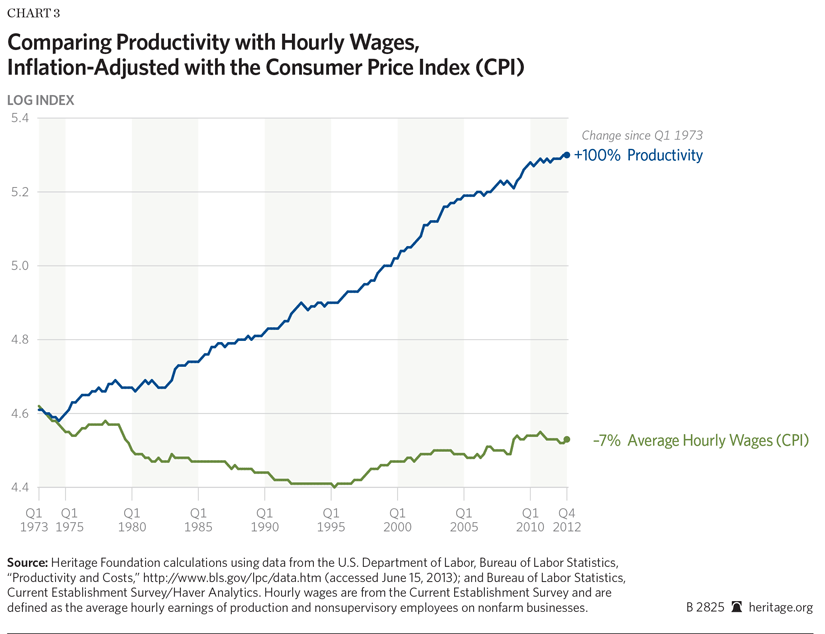Stocks are soaring as the Dow broke 55 record highs from November 2016 to present. Despite huge, record-breaking corporate profits, investors are told of an ominous threat to their profit margins: rising wages. This is bad advice, and smart investors need to understand why.
Here is the argument some of the most credible market watchers are making about rising wages. A Goldman Sachs analysis noted: “As our colleagues in equity strategy recently pointed out, rising wages are a threat to corporate profit margins … With wages growing at three percent year over year, odds are strong that wage growth will continue while the outlook for productivity growth remains far less certain.” In a Bloomberg interview, they forecast that profits would drop by an alarming 10 percent. A later analysis forecast a drop of corporate profits by 25 percent. Fiscal models that use “Revenues minus Labor Costs equal Profits” are too simple. The basic concept is, “if workers win, shareholders lose.” Analysts at Morgan Stanley and Blackrock are making similar projections. But this traditional argument does not reflect the reality of our dynamic market system for three reasons.
First, the analysis ignores the context and relationship between productivity and wage growth. The chart below shows productivity soared while wages stagnated for more than 40 years between 1973 and today. This is abnormal; basic economics implies that more productive workers should earn more money. Productivity and wages were linked in the boom of the post-WWII era, but workers did not share in the rebound to profits that the C-Suite and shareholders experienced post-1973.

Now workers’ earnings may be normalizing relative to productivity, and analysts should view this reconnection between productivity and wage growth as a return to business as usual in the marketplace. Is it so incomprehensible for the economy to generate robust profits and pay increases in tight labor markets? In all the years before the last forty, wage growth did not significantly damage corporate profits, so there is plenty of precedent for analysts to review.
Second, these forecasts reflect a skewed perspective on picking and holding equities. If you are a prospective investor, you typically ask questions about the health of a company you are considering. For example, would you buy stock in Apple if they announced they were slashing R&D commitments to boost short term profit prospects? Most investors would be wary of companies making decisions like these. They may give stocks a short-term bump, but successful investors understand that companies need to make choices that keep them profitable and innovative over the long term. If Amazon announced that a tightening labor market pushed their budget for pay and benefits to 350,000 employees, who would panic sell? Maybe a few. But most Amazon stockholders know that labor costs are a factor and that the e-commerce giant must pay market rates. Human capital is an Amazon asset, and not just a cost center. Few shareholders are day traders bound to the short-termism popular on Wall Street. Shareholders can take a longer view that forgoes sharp but short-lived jumps in favor of long-term growth.
Third, human capital yields more if the company’s people practices are well conceived and executed. Business leaders often refer to their people as their key resource but this is not—or should not be–just a talking point. Indeed, we have shared evidence that human capital is not just material, but is a key differentiator for corporations to sustain success. If the expense for labor rises, a company does not accept reduced profits. It innovates, changes, and finds ways to both boost the value added and to find and retain productive workers.
Our advice to stockholders is simple: Take analysts who prefer a strategy of minimizing labor costs to maximize profits in the short term with a grain of salt. A strong, productive workforce is not built without intentional human capital investment — and that includes appropriate compensation. Few sound investment strategies are based on rapid trading strategies that time the market or individual equities. Smart investors look for strength, and companies making human capital investments show just that.
Share
Tweet Are rising wages really a threat to corporate profit? @mpopov1229 & @conway_maureen discuss on @AspenInstitute blog.
Tweet Rising pay should be a good sign for investors, not a red flag. @mpopov1229 & @conway_maureen explain why.
Tweet “A strong, productive workforce is not built without intentional human capital investment.”
About the Authors
Maureen Conway is the executive director of the Economic Opportunities Program. Mark Popovich is the director of the Good Companies/Good Jobs Initiative at the Aspen Institute.
Keep in touch
Learn how the Economic Opportunities Program is helping low- and moderate-income Americans connect to and thrive in a changing economy. Follow us on social media and join our mailing list to stay up-to-date on publications, blog posts, and other announcements.


